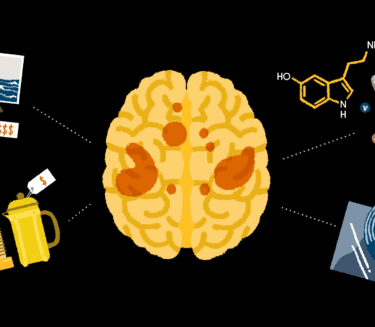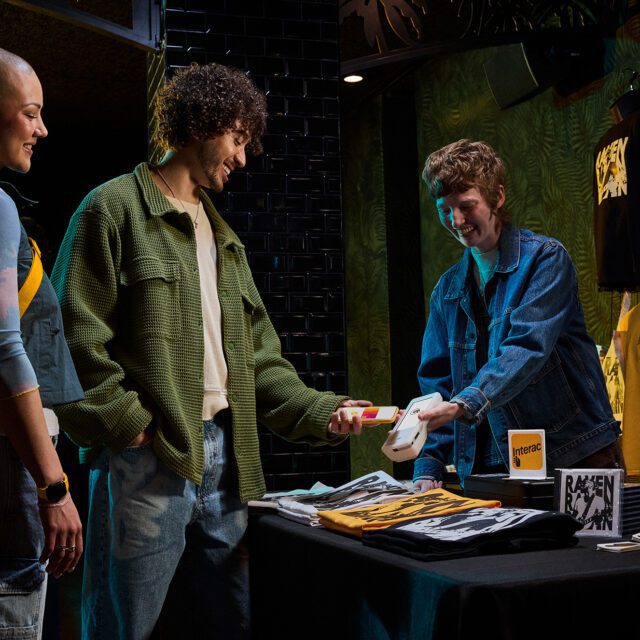Interac behavioural science experiment demonstrates the link between our spending habits and emotional outlook during the pandemic
The feel-good phenomenon is in full effect as Canadians tap into the power of their spending to navigate the pressures of the pandemic. Canadians are increasingly making feel-good purchases, defined as non-essential spending that boosts their mood, to access an array of positive feelings including satisfaction, confidence and pride during difficult times, according to the results of a national Interac behavioural science study* released today.
The phenomenon is especially visible among younger Canadians. Two thirds of Gen Z adults (66 per cent) and nearly three in five Millennials (58 per cent) are more likely to make feel-good purchases today than pre-pandemic, outpacing older generations including Baby Boomers (35 per cent) and the Silent Generation (22 per cent).
“Through this experiment, we are studying how human behaviour underpins key spending trends. The findings reveal the deeper emotions at play as Canadians adapt their spending habits to manage the stresses of the pandemic,” said William Keliehor, Chief Commercial Officer at Interac. “As the country’s national debit network, gaining a better understanding of how Canadians are supporting our recovering economy can guide us in helping them get more out of their money and their life.”
The experiment builds on the recent launch of Interac InLifeTM, the brand’s new platform which celebrates living a simpler, more joyful, less stressful life. Interac examined the spending of debit-users through simulated shopping experiences and diary exercises, which revealed that feel-good purchases are likely to bring about intense feelings of excitement (85 per cent) and pride (83 per cent) when linked to our passions. The price of the purchase does not cloud this effect, with small purchases related to the activities we care about prompting powerful emotional reactions.
“Canadians are increasingly spending their own money on the simple pleasures and pursuits that enrich their lives,” said Andrea Danovitch, Associate Vice President, Marketing & Brand at Interac. “The experiment reveals that even a low-value purchase can trigger a significant positive emotional response if it’s linked to our passions – proving that the smallest things in life can often feel like the biggest.”
The experiment demonstrates that feel-good purchases cause us to experience complex layers of emotions, and we may have to balance a combination of positive and negative feelings as the amount of money we spend increases. For instance, spending more than $50 of our own money on a feel-good purchase for ourselves makes us nearly three times as likely to be nervous as when we spend a lower amount (74 per cent vs. 26 per cent).
Looking ahead to life after the pandemic, it is significant that feel-good experiences are more likely to deliver happiness than material goods (68 per cent vs. 58 per cent). Two thirds of Canadians (67 per cent) are excited to start purchasing an expanded range of feel-good experiences post-pandemic, including travel, concerts, and sporting events.
“The Interac findings come at an interesting inflection point as Canadians anticipate the feel-good experiences which have been off limits during the pandemic,” said scientist and happiness researcher, Dr. Gillian Mandich. “It’s important to remember that a happy life is a sum of small joys. Even something as simple as buying your morning coffee can add a burst of happiness to your day.”
Further key findings from the Interac behavioural science experiment:
- Do our shopping lists offer a window into how we’re feeling? While all feel-good purchases tested in the experiment elicited happiness and satisfaction, other emotions were more pronounced according to the individual item. For example, we associate buying a candle with feeling calm, a lipstick with confidence and a TV with excitement and pride.
- When do we make a feel-good purchase? Canadians speculate they are more likely to make a feel-good purchase when happy (65 per cent) as compared with when they are sad (26 per cent) or stressed (24 per cent). However, when tested in the experiment, participants who reported feeling relatively happy, sad or stressed at the time were almost equally likely to want to make a feel-good purchase to increase their happiness.
- To gift or to get? In other words, are we happier to give to others or ourselves? When an item costs less than $50 of our own money, giving it as a gift is more likely to be a happy experience than keeping it for yourself (47 per cent vs. 37 per cent). However, when an item costs over $50, keeping it for yourself is more likely to make you happy than giving it as a gift (63 per cent vs. 53 per cent)
- What is the most generous generation? Three quarters (75 per cent) of Gen Z adults report feeling happy about purchasing a gift, compared with 67 per cent of the average population.
- What role does personality play? Introverts are more likely to report feeling happy about a gift purchase than extroverts. Interestingly, the type of gifts they purchase also differs. Introverts over index on clothing and beauty-related purchases as compared with extroverts.
- What does Interac transaction data show? Since the beginning of the pandemic Interac has seen an increase in use of its debit products, including a 333 per cent increase in Interac Debit eCommerce payments1 and almost one billion Interac e-Transfer transactions sent2 since the beginning of April 2020. Canadians are using their own money in greater numbers than ever before, signaling a shift in spending behaviour overall.
Visit In The Know for more information about the Interac behavioural science experiment and to access a range of resources addressing Canadians’ changing spending habits during the pandemic. These include a recent study examining how small spending can have a big impact, with 31 per cent of Canadians sharing they are willing to pay up to $10 more for the same product if needed, to support local businesses instead of purchasing from major online retailers.3
*About the Interac behavioural science experiment
Interac Corp. commissioned Hill+Knowlton Strategies (H+K) to conduct a national behavioural science experiment exploring the role of feel-good purchases in pandemic life. H+K’s behavioural science unit used the Kantar online panel to reach 1,088 Canadian debit users aged 18+ between 26 April and 2 June 2021. Participants were taken through interactive simulated shopping experiences and diary exercises to test emotions associated with spending. Data was weighted on age, gender, and region according to 2016 census figures. The age ranges of participants include: Gen Z adults (18-24), Millennials (25-40), Gen X (41-56), Boomers (57-75), and the Silent Generation (76+.) For the purposes of the experiment, a feel-good purchase was defined as a non-essential purchase that positively impacts your mood.
About Interac
Interac Corp. empowers Canadians to transact digitally with confidence by providing payment and value exchange services. Through our world-class privacy, fraud mitigation, governance and digital identity and authentication expertise, we help keep Canadian customers safe and secure when transacting. With nearly 300 financial institutions connected to our network, Canadians choose Interac products an average of 18 million times a day to pay and exchange money. Interac champions workplace culture and corporate citizenship based on the principles of responsibility, diversity and inclusion. We are proud to be one of Canada’s leading and most trusted financial brands. For more information, visit In the Know.
For further information
Media contact: Interac Corp., 416-869-2017, media@interac.ca
Interac is a registered trade-mark and the Interac logo and InLife design are trade-marks of Interac Corp. Used under licence.
*Interac Spending Survey, April 2021
1Interac Debit e-Commerce payments March 2020 vs. March 2021
2 Interac e-Transfer transactions totalled 997,356,966 transactions April 2020 to May 2021



